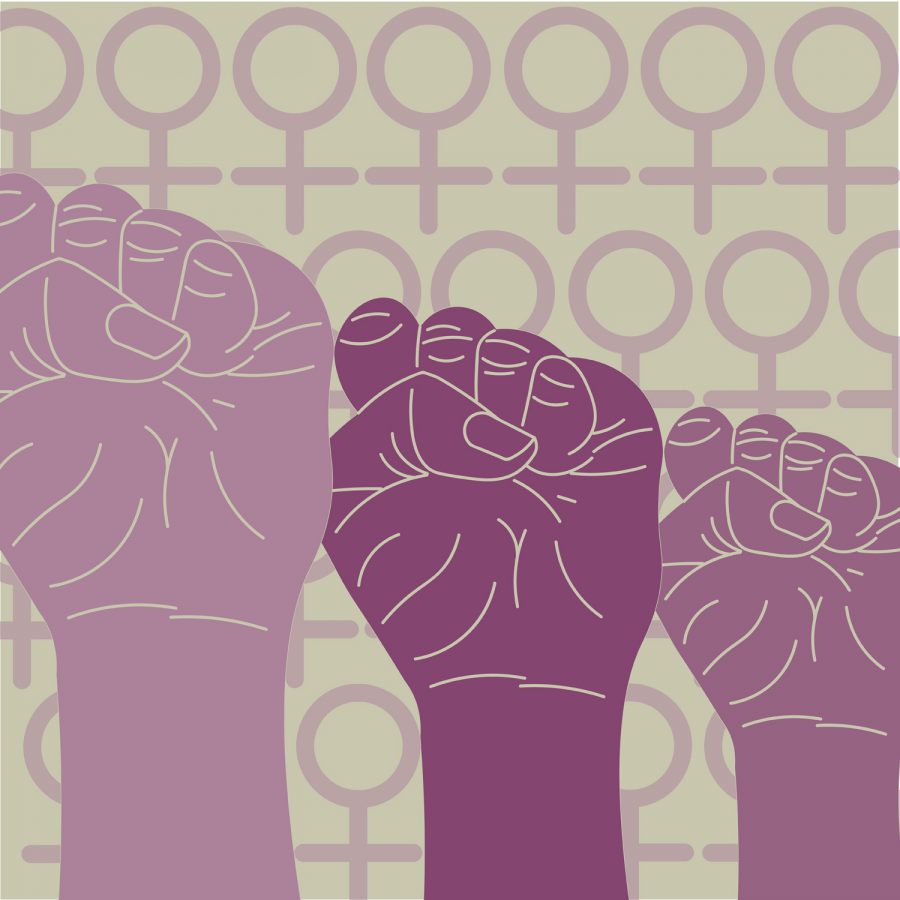Opinion | What is the future of feminism in a two-party system?
November 5, 2021
This is it. This is the column that gets dredged up when I run for office. At the very least, it’s getting me haunted by Phyllis Schlafly. The questions at hand — can conservative women be feminists? And how must the Democratic Party adapt its fight for gender equity?
To answer the first question, we have to define intersectional feminism. Conceptualized by Kimberlé Crenshaw in 1989, the theory of intersectionality explores how problems such as racism and sexism often overlap, creating multiple levels of social injustice.
Intersectionality equips us to better fight for structural change. Institutions built by rich, white, slave-holding men cannot possibly serve and protect all of us — they were never meant to. Equity means acknowledging the generations of those who have been disadvantaged by such institutions and passing legislation accordingly.
Here’s where we hit our first roadblock. Conservatives tend to argue that sexism is incidental, not systemic. This means many of the more than half of white women voters who supported former President Donald Trump in 2020 probably believed that their personal experiences with sexism were isolated incidents. It also means that conservative policies rarely account for these disparities, because how do you legislate interpersonal relations?
For example, conservatives argue the gender pay gap is due to women choosing lower-paying jobs or wanting to be mothers. By attributing the pay gap to personal behavior, conservatives are absolved from questioning why women are financially punished for having children, why women are overrepresented in low-paying jobs and why different jobs are valued less under capitalism in the first place.
The reality is, conservative ideologies will never lead us to equity. Support of gun rights led to 172 House Republicans voting no in March on the Violence Against Women Reauthorization Act, which organizes responses to domestic violence and sexual assault. Concerns about state’s rights led to 49 Senate Republicans voting no just this Wednesday on the John Lewis Voting Rights Act, which would reinstate the preclearance process that prevents states from passing voter suppression laws.
In addition, Republican inaction on climate change greatly affects low-income communities who are unable to move away from areas with air pollution and food apartheid. Their opposition to affordable health care, child care and education, safe abortions, a higher minimum wage, reparations and welfare all point to a reality — conservative policies do not aim to achieve economic equity and social justice, which are the main goals of intersectional feminism.
White women are less likely to support women’s issues because they identify more strongly with conservatism and religion. So, they believe in small government and God — fine. But let’s get to the bottom line. If you’re someone who thinks women benefit from legislation such as the VAWA and the VRA not passing, it shows how much a broken system actually works for you. And it shows how little you think about the consequences of your vote, because you will likely never experience them.
White conservative women — simply being a woman is not enough. It’s not enough to appreciate that feminism is about choice when your vote to ban abortions takes away someone else’s choice. It’s not enough to be a leader in your church without acknowledging that often — too often — organized religion is used as a stick with which to beat other women. It’s not enough to support your female friends. It’s not enough.
And Democrats — it’d be nice if you could pass something. I mean, really. Supporting moderate candidates doesn’t seem to be working. Watering down bills because you think you can sneak them by Republicans doesn’t seem to be working, either. The party needs to be more radical and less symbolic.
For example, the Equal Rights Amendment was introduced nearly 100 years ago and it still hasn’t passed. In the meantime, could we come up with a more specific piece of legislation than the ERA? If the point of the ERA is to codify gender protections into constitutional law, it should’ve been rewritten with comprehensive, infallible language. The addition of “equality of gender, gender identity and sexual orientation” would allow judges to confidently rule with more nuance.
This brings me to my last point. The future of the feminist movement relies on embracing gender expansive individuals. Existing legislation about women’s rights needs to be more inclusive and bold. I can confidently say the inclusion of other gender identities does not mean the erasure of women, even though some second-wave feminists may disagree. We have always said that feminism benefits everyone. So, Democrats, act like it.
The main themes of intersectional feminism — social and racial justice and economic equity — will never result from conservative policy. But they cannot stand to live as abstractions in the Democratic Party, either.
India is The Pitt News’ informed rebel girl. Write to her at [email protected] or follow her on Twitter @indialarson_, but you better like her tweets.









